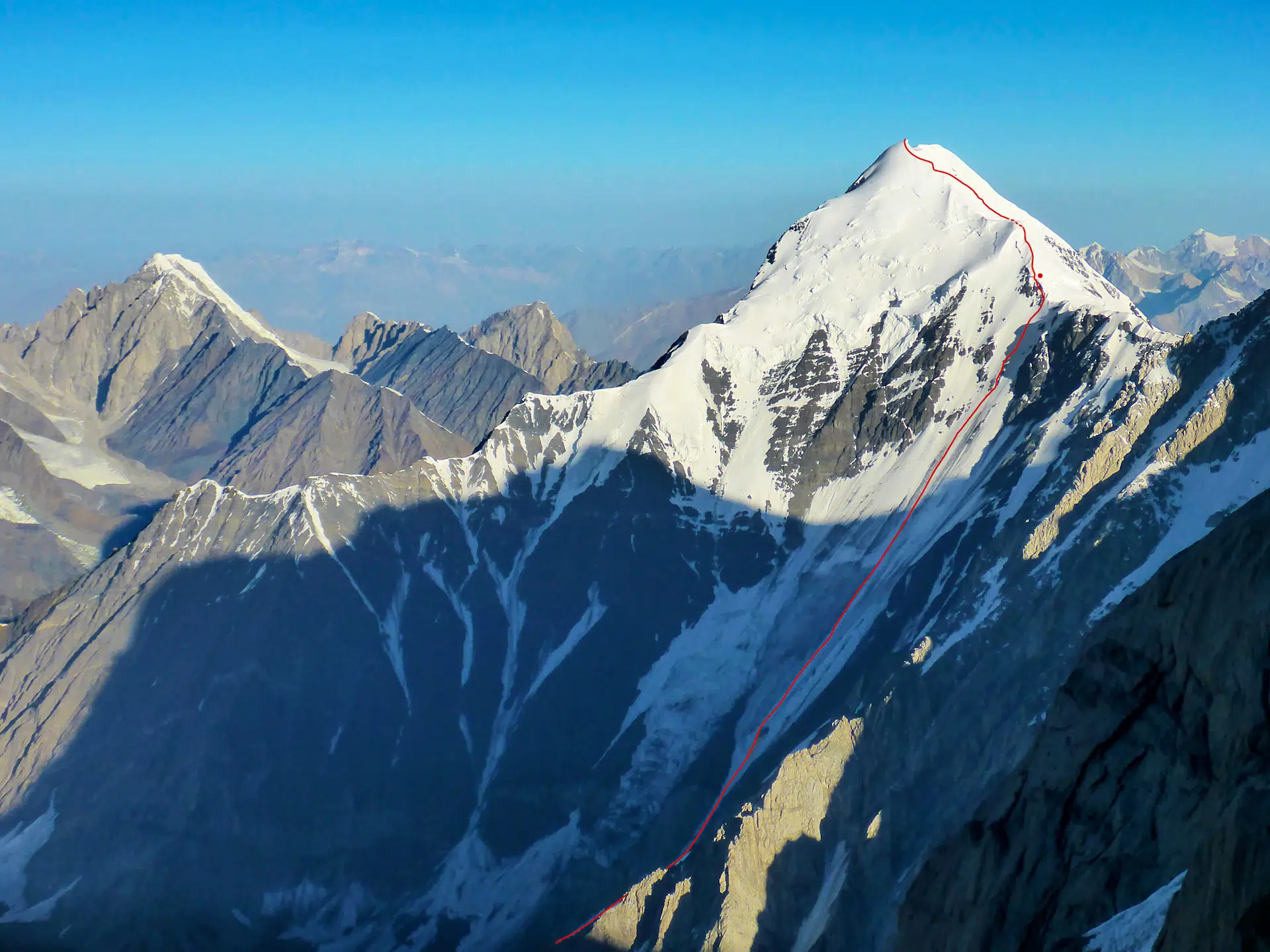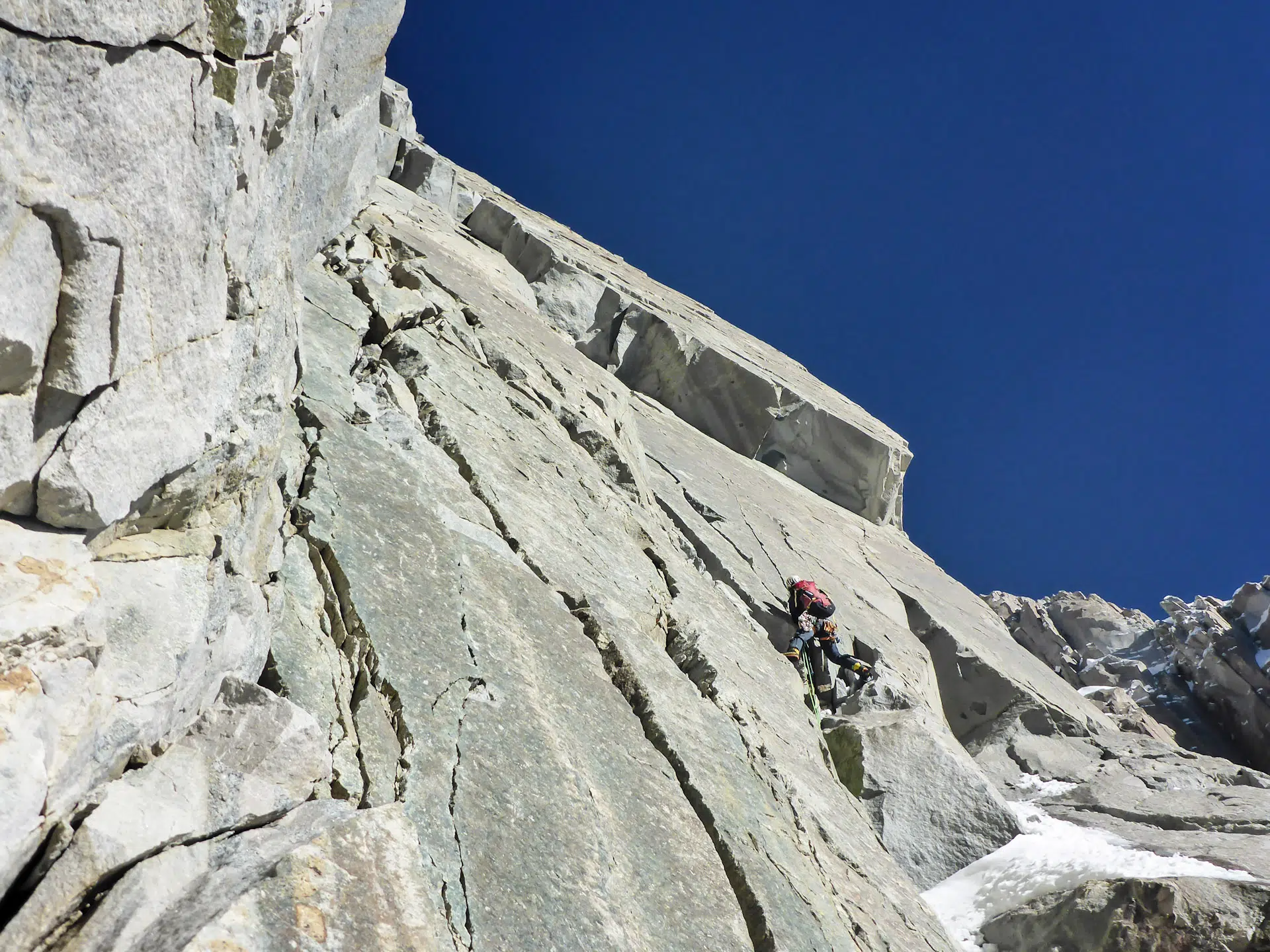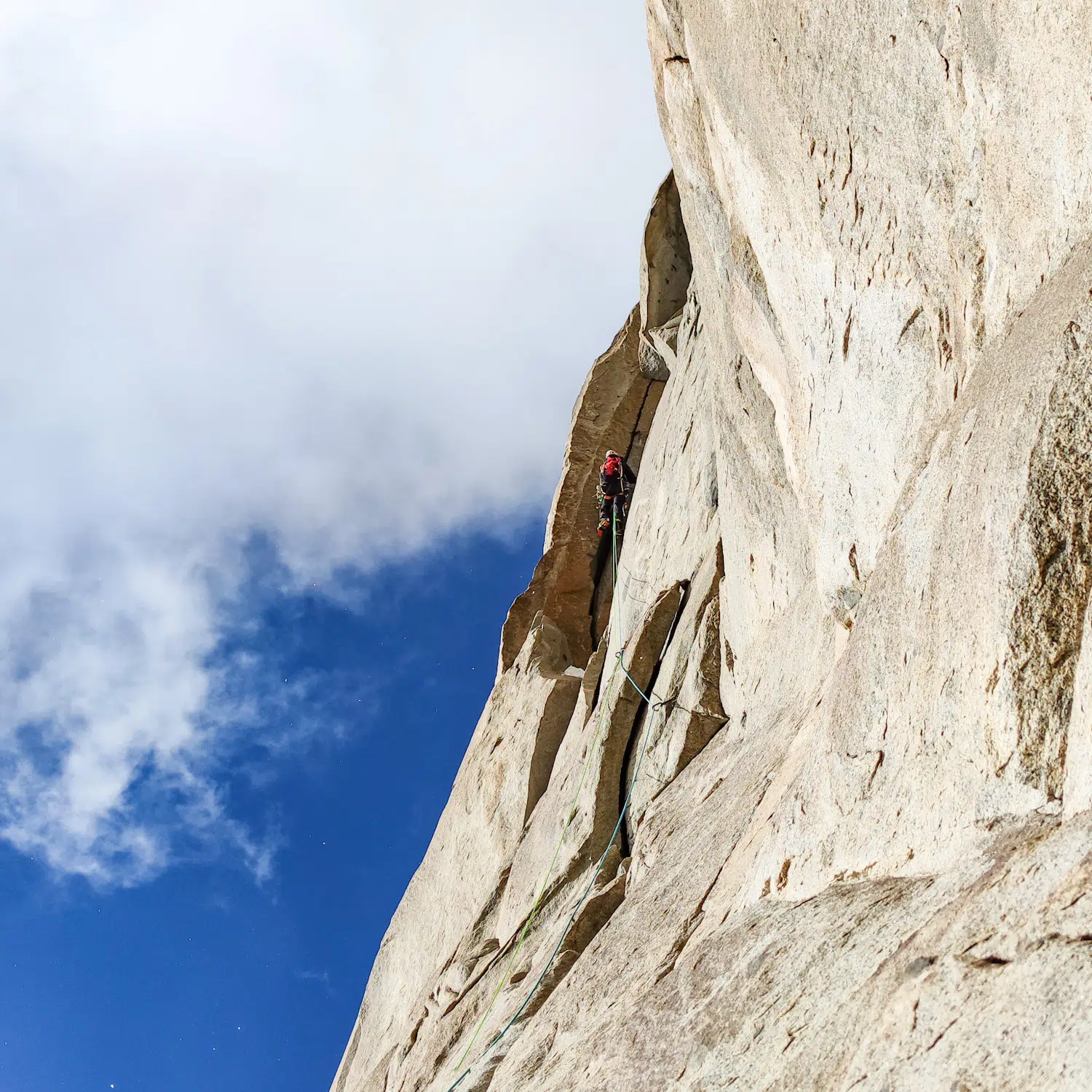The Georgian team Archil Badriashvili/Giorgi Tepnadze continues to open new technical routes on high summits or to clear virgin faces. This summer, with Baqar Gelashvili, Archil and Giorgi explored the Roch Gol valley in Pakistan (Hindu Kush). They came back with the major opening of a route announced ED2 and 2300 meters on the northwest summit of Saraghrar (7303 m). Report by Archil Badriashvili.
The Hindu Kush – the border between Pakistan and Afghanistan – what a mountain range ! Rosh Gol valley, Saraghrar, 7 303 m, Languta-e-Barfi, 6 833 m, and surrounding peaks are pure excitement. When I have explored this valley a year ago, then I was sure, that we’ll meet each other soon. It did not need much of a presentation for Giorgi Tepnadze on how fascinating mountains were there, they “speak” on behalf of themselves. After a two-month independent expedition to the Makalu this Spring, we felt it was time again to pursuit our favorite activity – to climb steeper faces and explore wilder ranges.
We have invited Baqar Gelashvili, our Georgian friend and partner in crime with whom we have done several technical first ascents in the Himalayas and many in the Caucasus. It was the first time for him here, the third for us, but we had no clue what the Hindu Kush and Chitral area would offer to us.
North-west Pakistan, on the border with Afghanistan, is extremely non-touristic, the trip, therefore, was adventuristic, both serious and fun, joyful especially when meeting hospitable people, exchanging positive vibes and words.
To have a clear image the only way is to see it with your own eyes.
We have tried to study Rosh Gol thoroughly, all the data available was not satisfactory. Lack of mountaineering activity after 70’s conflicts in Afghanistan and later events affected neighbouring countries too, this peaceful region of Pakistan was put into “red list” and since decades it grew wild and became unexplored again, it is amazing nature of the Nature. We understood, to have a clear image the only way is to see it with your own eyes. A relatively small budget was found in our federation and in our pockets, the permit was purchased and hosts, Hussein Ahmed from Terich-Mir travel was awaiting us.
It was mid-August when Talibs took the Kabul and we took over Islamabad ; at a very good pace, we headed toward Chitral (Khyber-Pakhtunkhwa), and then with 4×4 jeep, we drove through a dangerous road, with the whole expedition gear, food, and base camp equipment in our car, towards the beginning of the trek. Soon we reached a beautiful place for our base camp at 4100 meters. Together with Irshad the guide, Hayat the cook, and Nadir the mail runner, and food supplier we made a very friendly atmosphere in the BC. The men’s company was enriched by the half-wild bulls and a goat, which we have sacrificed to the fortune of Saraghrar and gave him a chance to choose his own path and walk free.
Acclimatization
First trip from the BC was the observation of Saraghrar’s NW face, from where we continued to the furthermost peak of the valley – which is Languta-e-Barfi, this mountain, 170 meters shy of 7000 offered a good, fast and light climb. Personally for my experience it was a good challenge as I had no acclimatization yet, Baqar and Giorgi have been to the mt. Kazbek 5054 and Shkhara 5203 (Georgia’s highest mountains).
The South face was mostly ice, 1800 meters high. Angle increased periodically and in the upper half it was constantly around 60 degrees. We have “soloed up” the slope, which took us a full day. On the second day, our mission continued in snow, on a windy ridge and so we have reached the summit and enjoyed a beautiful view into both countries from a borderline. That day we abseiled down the same face and by the end of the second day, we put our tent on a moraine again, at 4800 meters.
I can’t say how much energy was spent to build bivouacs and how much the lack of recovery was during uncomfortable nights !
Saraghrar’s NW face
On the 1st of September, after five days of rest we left the BC again, this time for our main objective – Saraghrar’s NW face, we again took time to observe the Supercouloir, the wall, and possibilities to descent.
On the 3rd early morning, we set off. Ready for a big alpine wall and prolonged stay on the mountain. Still, we could not exactly calculate the difficulty of the wall, could not see the dangerous nature of the ridge on top of it. Gas was enough but food supplies were not sufficient : I remember on the last couple of days we had almost nothing to eat.
The NW Supercouloir has started with a relatively short and complex icefall, then the icy slope became more stable, in most parts varying around 50-60 degrees. We simul-climbed it and broke plenty of ice while preparing a bivouac. Here started series of bivouac-making and it was fatigue all the way to 7000, I can’t say how much energy was spent to build ones and how much the lack of recovery was during uncomfortable nights !
After the Couloir, we started the wall on the left. This is the biggest and longest part of the story and it lasted for 20 pitches over 5 days : first day, full of hard dry-tooling at M5+ at least, it ended up with an exposed sitting “bivouac” on a tiny ledge, and on the last day on the wall, at around seven thousand meters we climbed last, yet hardest pitches of the wall. In between, there were numerous pitches with sealed granite, tricky protections, hard mixed, very hard aid and climbing, we came over everything that can be met on a big alpine wall.
No less demanding was a psychological factor, but this too, is very natural when you go for a huge, unexplored side of a mountain. Our tight friendship and experience together helped us to overcome those constant difficulties and mood swings.
After finishing the wall, on the seventh day we decided to leave half of our equipment and head to the summit lightly. We still took technical gear, tent, remaining food (chocolate bar and one pack of dry food) and one sleeping bag for any case. It was a crucial decision as the ridge proved to be, by the surprise, super tricky and instead of reaching summit in a day, it took one and half.
The ridge was made of soft snow and cornices, no protection was feasable. There I thought for the first time seriously, are we doing it right?! But this emotion lasted not long. Giorgi took a bold lead, this section, where we have gained 100 meters or more lasted half day, and lots of nerves and power was spent. We camped at 7150 for our final push. Of course the night was demanding, as we had minimalistic bivouac equipment and food. The weather deteriorated, the wind started to increase by the evening.
Summit day, on 10th of September : mobilization and power of will worked well against cold wind, deep snow and steep slope. By the mid-day we have reached the summit plateau, we were happy to lay down and did not worry about falling down anywhere. The last pitch was cool, short but not easy, I now think it was M3+ and led to the rocky summit with some seats. I waited for all to come and then climbed together to the highest virgin summit of the region – Saraghrar North-west, my gps and sat has shown 7,303 meters. With smiles on our faces and Georgian “cognac” in our hands we stayed there for 30-40 minutes more. The weather cleared for a short time and we saw magnificient mountains, like Tirich Mir and other big peaks all around us.
I am happy to say that not much equipment was left on the wall and nothing was left in the couloir.
That night we stayed below 7000. The way back, after hours of exploring, was obvious and it was on the same face, we counted on a NW couloir and fast descent. It was crucial – after finishing food now it was time for our gas to get empty. We rested well and started non-stop rappels all the way down, headed down on a steep wall towards upper end of Couloir, although we did not see these part, it went without major complications.
We sticked to the center of the couloir and counted at least 35 rappels on that last day. I am happy to say that not much equipment was left on the wall and nothing was left in the couloir. Below 5000 we relaxed and only after this we felt tired, each of us has lost more than five kilograms and we all had minor frostbites on our feet and fingers.
I had a big trouble carrying my backpack down but it’s in past now. A short rest and a good nap at 4800 we headed down to the BC and reached it by the evening of the 12th of September. We stayed there for another three days and enjoyed views on our summits (they were very well visible from our tents) together with our BC crew. On 29th day after being in Rosh Gol we left the valley and traveled through Pakistan’s cities, driving towards opposite of NW, to the South-East ! Again, what a trip, adventure of lifetime !
Summary of ascents
Saraghrar Northwest 7303 m
First ascent of the summit and of the NW face
2300 m | 6B (Caucasus grading system)
ED2 | UIAA VII | M5+ | A3+ | 80/90° | 7 bivouacs
Langute-e-Barfi 6833 m
South Face first ascent
1800 m | 5A (Caucasian)
TD | UIAA V | 60° ice 75° snow | 1 bivouac roundtrip









